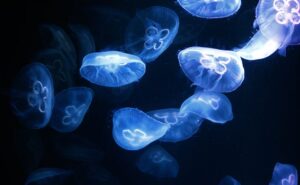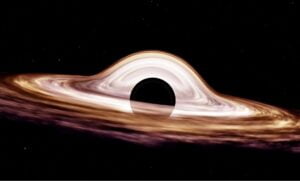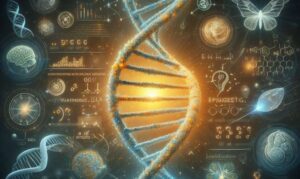Have you ever wondered how plants turn sunlight into the energy they need to grow? Photosynthesis is the amazing process that makes this happen, and it’s fundamental to life on Earth. Let’s dive into how it works and why it’s so important, all explained in a way that’s easy to understand.
What Is Photosynthesis and Why Is It Important?
What exactly is photosynthesis?
Photosynthesis is the process by which plants, algae, and some bacteria convert light energy into chemical energy, specifically in the form of glucose. They use sunlight, water, and carbon dioxide to produce glucose and oxygen. This process not only provides food for the plant itself but also generates oxygen, which is essential for most life forms on Earth.
Why should I care about photosynthesis?
- Oxygen Production: Photosynthesis is responsible for the oxygen in our atmosphere.
- Food Source: It’s the foundation of the food chain, feeding plants which in turn feed animals.
- Carbon Dioxide Removal: Helps in reducing the greenhouse effect by absorbing carbon dioxide.
How Do Plants Capture Light Energy?
How do plants capture sunlight?
Plants have a special pigment called chlorophyll in their cells, primarily in the leaves. Chlorophyll absorbs light, mostly in the blue and red wavelengths, and reflects green, which is why plants appear green.
- Chloroplasts: These are the organelles in plant cells where photosynthesis happens. They contain chlorophyll.
- Light Absorption: When sunlight hits the chlorophyll, it energizes electrons, kicking off the process of converting light energy into chemical energy.
What Are the Steps of Photosynthesis?

What are the main stages of photosynthesis?
Photosynthesis occurs in two main stages: the light-dependent reactions and the Calvin cycle (light-independent reactions).
Light-Dependent Reactions
What happens during the light-dependent reactions?
- Location: These reactions take place in the thylakoid membranes of the chloroplasts.
- Process:
- Photon Absorption: Chlorophyll absorbs light, energizing electrons.
- Water Splitting: Water molecules are split to release oxygen, protons, and electrons.
- ATP and NADPH Formation: The energized electrons move through the electron transport chain, creating ATP and NADPH, which are energy carriers.
The Calvin Cycle
What happens during the Calvin cycle?
- Location: This cycle occurs in the stroma of the chloroplasts.
- Process:
- Carbon Fixation: Carbon dioxide is fixed into a stable intermediate.
- Reduction Phase: ATP and NADPH produced in the light-dependent reactions are used to convert the stable intermediate into glucose.
- Regeneration of RuBP: The cycle regenerates RuBP (ribulose bisphosphate), allowing the cycle to continue.
Why Do Leaves Change Color in the Fall?
Why do leaves change color in autumn?
In the fall, chlorophyll breaks down due to changes in temperature and daylight, revealing other pigments like carotenoids (yellow and orange) and anthocyanins (red and purple).
- Chlorophyll Degradation: Less chlorophyll means less green color.
- Other Pigments: Carotenoids and anthocyanins become visible, giving leaves their autumn hues.
How Does Photosynthesis Affect the Environment?
How does photosynthesis impact the environment?
Photosynthesis plays a crucial role in maintaining the balance of oxygen and carbon dioxide in the atmosphere. It also helps in mitigating climate change by absorbing carbon dioxide, a major greenhouse gas.
- Carbon Sink: Forests and oceans absorb large amounts of CO2, reducing the greenhouse effect.
- Oxygen Supply: Continual production of oxygen supports aerobic life forms.
Can Photosynthesis Be Enhanced?
Can we improve the efficiency of photosynthesis?
Researchers are exploring ways to enhance photosynthesis to boost crop yields and address food security. Some methods include genetic engineering to make plants more efficient at capturing light and using less water.
- Genetic Modification: Tweaking the photosynthetic pathways to improve efficiency.
- Artificial Photosynthesis: Developing systems that mimic natural photosynthesis to produce clean energy.
Real-Life Examples of Photosynthesis
How does photosynthesis manifest in everyday life?
Consider the food you eat. Fruits, vegetables, grains, and even meat are all products of photosynthesis. Plants grow by converting sunlight into energy, and animals eat these plants or other animals that have eaten plants.
- Gardening: When you grow a garden, you witness photosynthesis firsthand. Your plants convert sunlight into the food they need to thrive.
- Forests: Forests are vast networks of plants constantly performing photosynthesis, contributing to our oxygen supply and serving as carbon sinks.
How Are Photosynthesis and Cellular Respiration Related?
Photosynthesis and cellular respiration are two fundamental biological processes that are intricately linked, playing crucial roles in the energy cycles of living organisms. Understanding their relationship helps us appreciate how energy flows through ecosystems and supports life on Earth.
What Is Cellular Respiration?
What is cellular respiration?
Cellular respiration is the process by which cells convert glucose and oxygen into energy (ATP), carbon dioxide, and water. It occurs in the mitochondria of eukaryotic cells and is essential for providing the energy that cells need to perform various functions.
- Aerobic Respiration: The most common form, using oxygen to break down glucose.
- Anaerobic Respiration: Occurs in the absence of oxygen, producing less energy and byproducts like lactic acid or ethanol.
How Do Photosynthesis and Cellular Respiration Work Together?
How are these processes interconnected?
Photosynthesis and cellular respiration are complementary processes. They form a cycle of energy transformation and matter recycling in ecosystems.
Photosynthesis
- Reactants: Carbon dioxide (CO₂) and water (H₂O)
- Products: Glucose (C₆H₁₂O₆) and oxygen (O₂)
- Energy Source: Sunlight
Cellular Respiration
- Reactants: Glucose (C₆H₁₂O₆) and oxygen (O₂)
- Products: Carbon dioxide (CO₂) and water (H₂O)
- Energy Source: Chemical energy in glucose
The Cycle:
- Photosynthesis: Plants use sunlight to convert CO₂ and H₂O into glucose and O₂.
- Consumption: Animals (and plants) consume glucose and O₂ during cellular respiration.
- Respiration: Cells convert glucose back into CO₂ and H₂O, releasing energy in the form of ATP.
- Recycling: The CO₂ and H₂O released are used again by plants in photosynthesis.
Why Are These Processes Important for Life on Earth?
How do these processes sustain life?
- Energy Flow: Photosynthesis captures and stores energy from the sun in glucose molecules. Cellular respiration releases that stored energy for use by cells.
- Oxygen Production: Photosynthesis produces oxygen, essential for most living organisms’ respiration.
- Carbon Dioxide Removal: Photosynthesis helps reduce CO₂ levels, which is crucial for climate regulation.
- Nutrient Cycling: The products and reactants of these processes cycle nutrients and energy through ecosystems, supporting all forms of life.
What Are the Differences Between Photosynthesis and Cellular Respiration?
How do these processes differ?
- Energy Source: Photosynthesis requires sunlight; cellular respiration does not.
- Location in Cells:
- Photosynthesis: Occurs in chloroplasts of plant cells.
- Cellular Respiration: Occurs in mitochondria of both plant and animal cells.
- Function:
- Photosynthesis: Converts light energy into chemical energy stored in glucose.
- Cellular Respiration: Converts chemical energy in glucose into usable energy (ATP).
- Reactants and Products:
- Photosynthesis: Uses CO₂ and H₂O to produce glucose and O₂.
- Cellular Respiration: Uses glucose and O₂ to produce CO₂ and H₂O.
Real-Life Examples of the Interconnection
How does the relationship manifest in everyday life?
- Plant Growth: Plants grow by using photosynthesis to create food and then use cellular respiration to break down that food for energy.
- Food Webs: Herbivores eat plants to obtain glucose, which they then metabolize through cellular respiration. Carnivores eat herbivores, continuing the cycle of energy transfer.
- Breathing: When we breathe, we inhale oxygen produced by plants during photosynthesis and exhale carbon dioxide, which plants then use.
Conclusion
Photosynthesis is a remarkable process that sustains life on Earth by converting light into energy. It not only fuels plants but also supports the entire food chain and helps regulate our atmosphere. Photosynthesis and cellular respiration are two sides of the same coin, essential for the energy dynamics of life on Earth. Photosynthesis captures and stores energy from the sun, creating the oxygen we breathe and the food we eat. Cellular respiration releases that energy to power our cells. Together, they form a cycle that maintains the balance of gases in the atmosphere and the flow of energy through ecosystems, making life as we know it possible.






